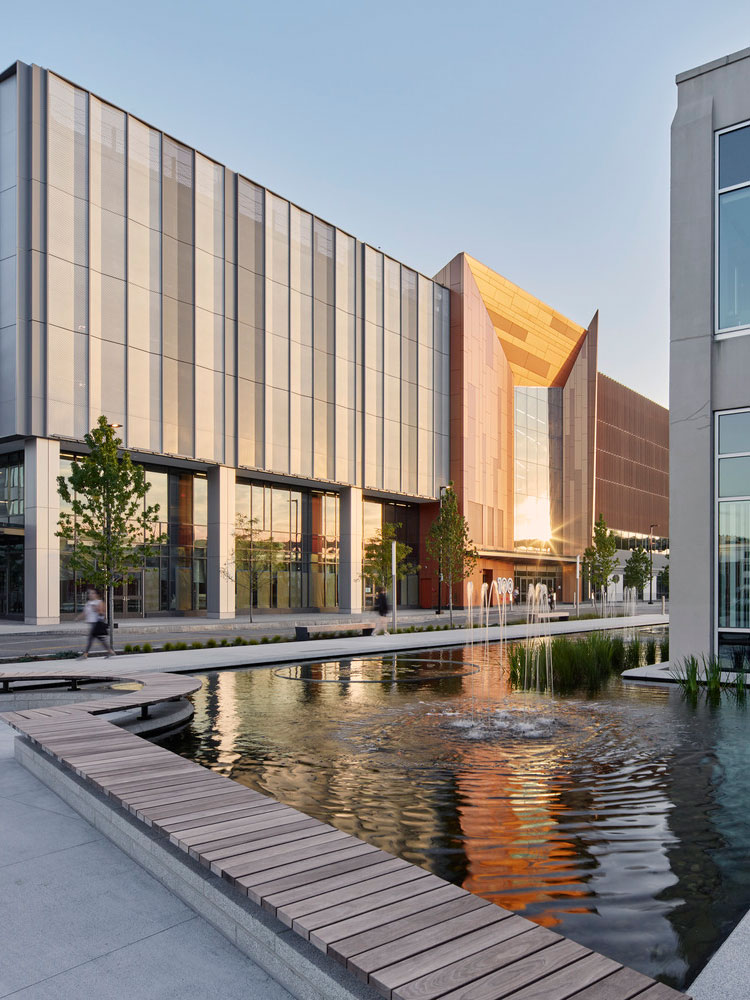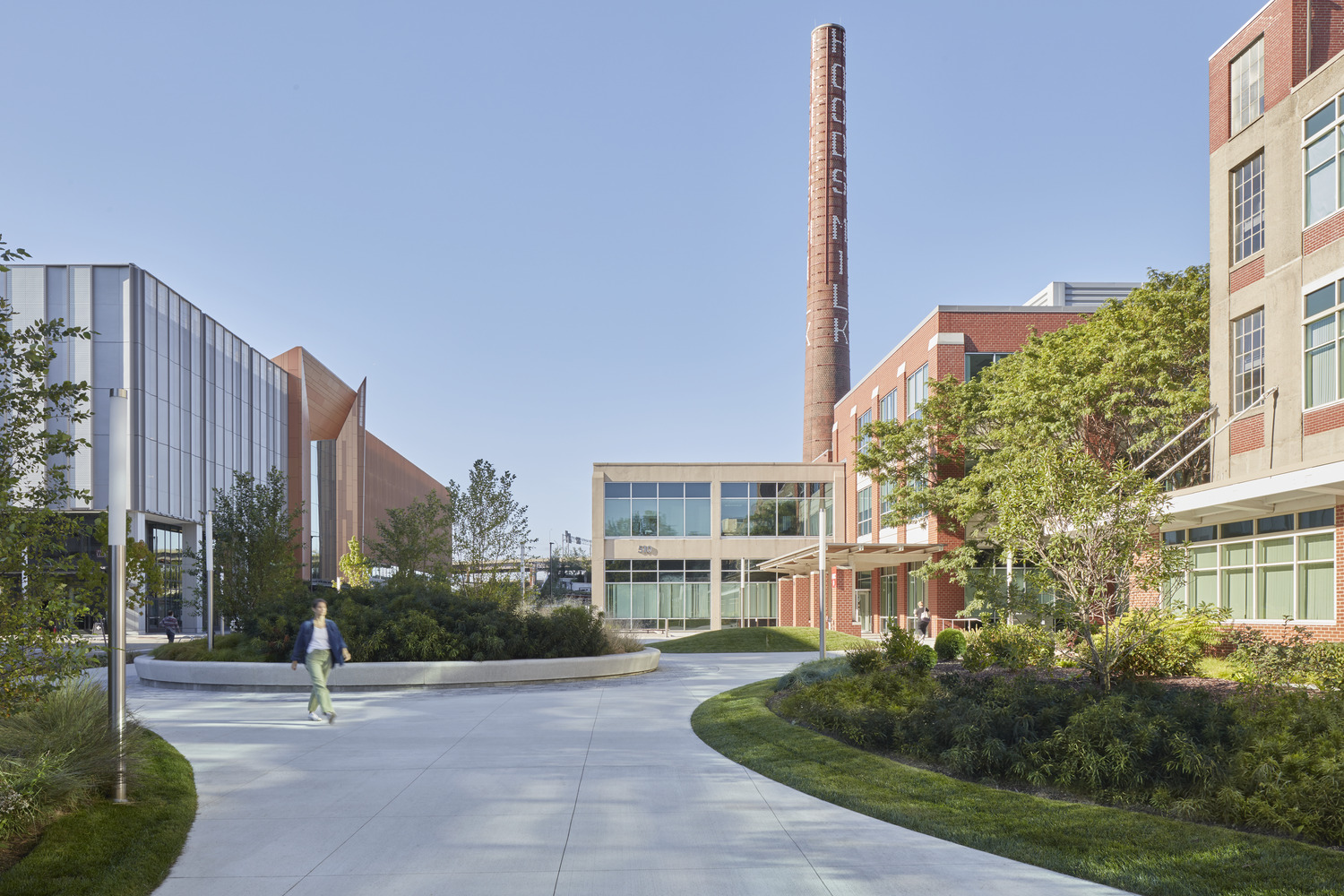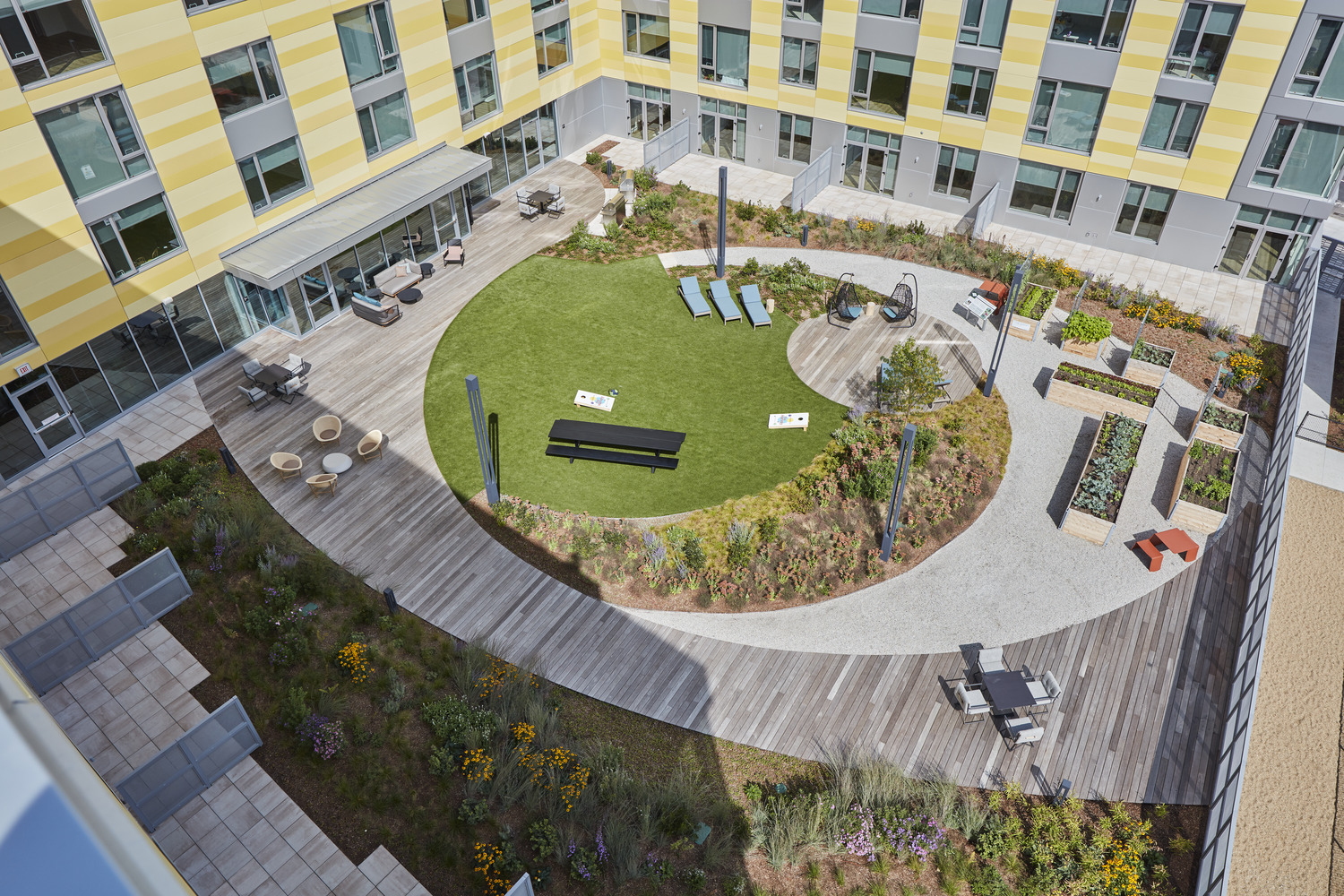
The design is inspired by Hood Park’s 200-year-old industrial history.
Proximity to the old Middlesex Canal, its initial function as a mill pond, and subsequent use as the Hoods Milk plant all influenced the design of the plaza.
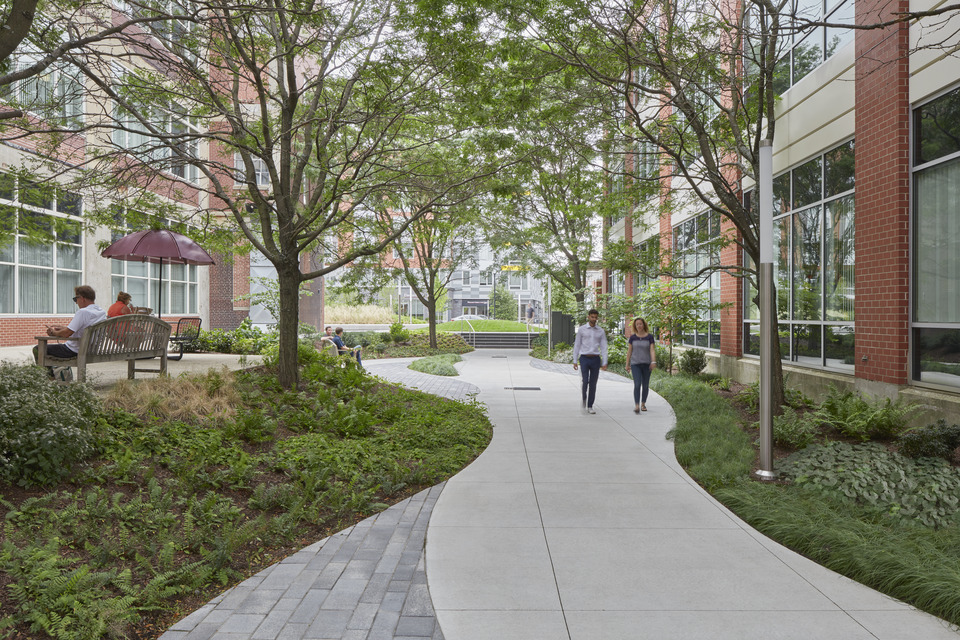
The old site had existed only for private parking and vehicular circulation. By contrast, the Plaza is a vibrant, pedestrian-first space enjoyed by the local community.
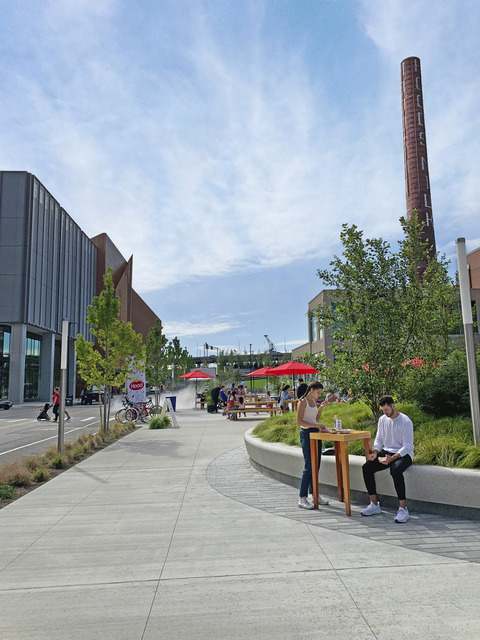
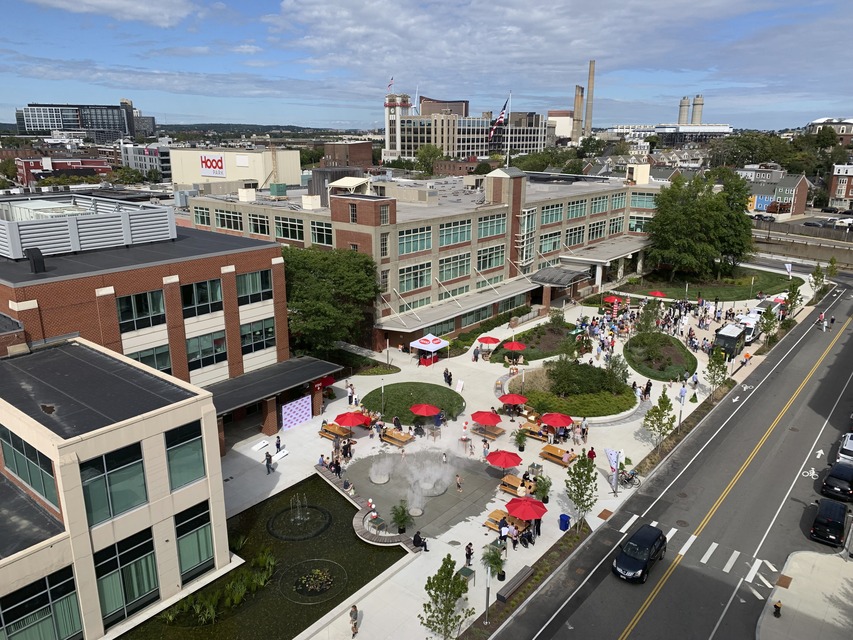
The Plaza hosts a wide range of community events.
Festivals and farmers markets occur throughout the year, serviced by a specially designed access area for food trucks and other vehicles. An interactive splash pad offers a place for local parents to bring their kids and play in a safe environment. Grassy mounds and seat walls allow visitors to lounge and relax.
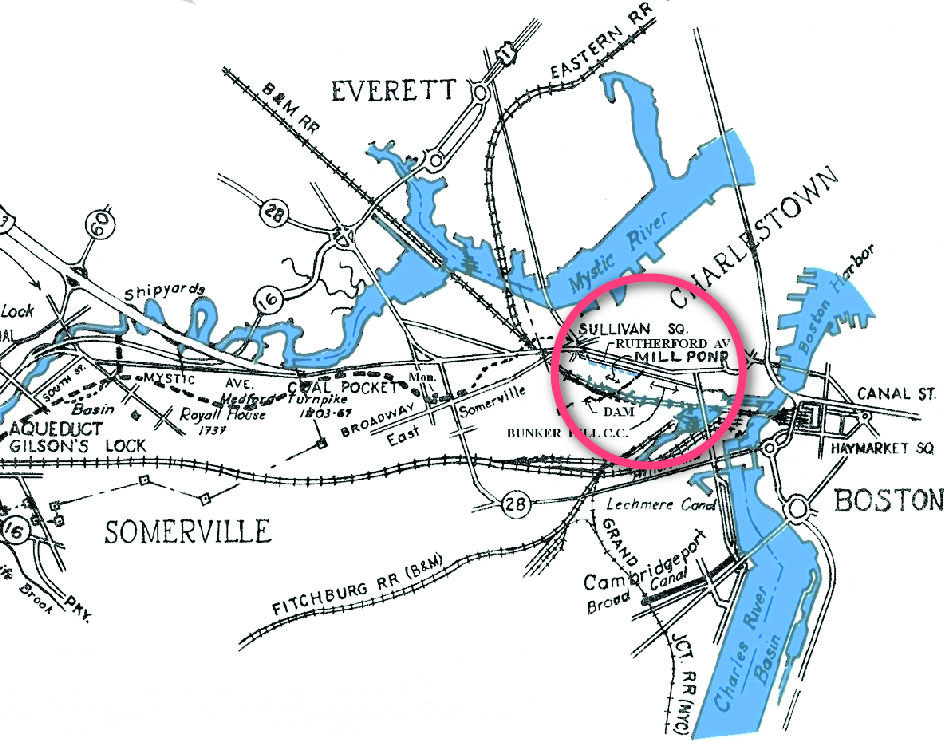
Opened in 1803, the Middlesex Canal once connected the Merrimack River in Lowell to Boston Harbor in Charlestown.
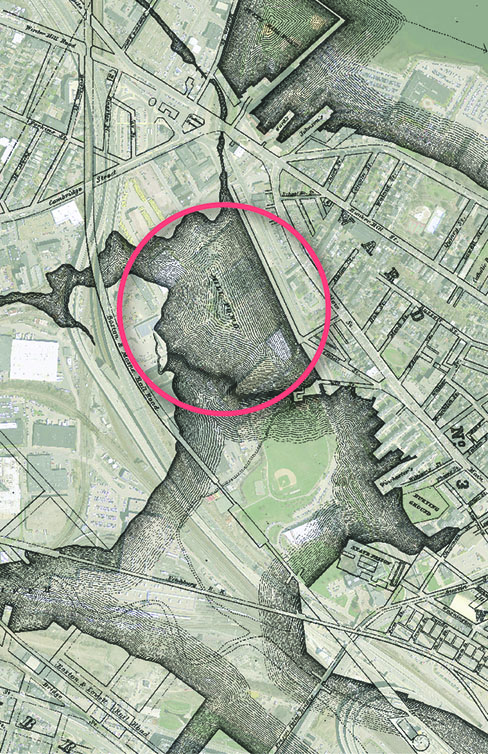
The canal’s original route ran directly through the site of Hood Park, passing between a mill pond to the west and Rutherford Avenue to the east.
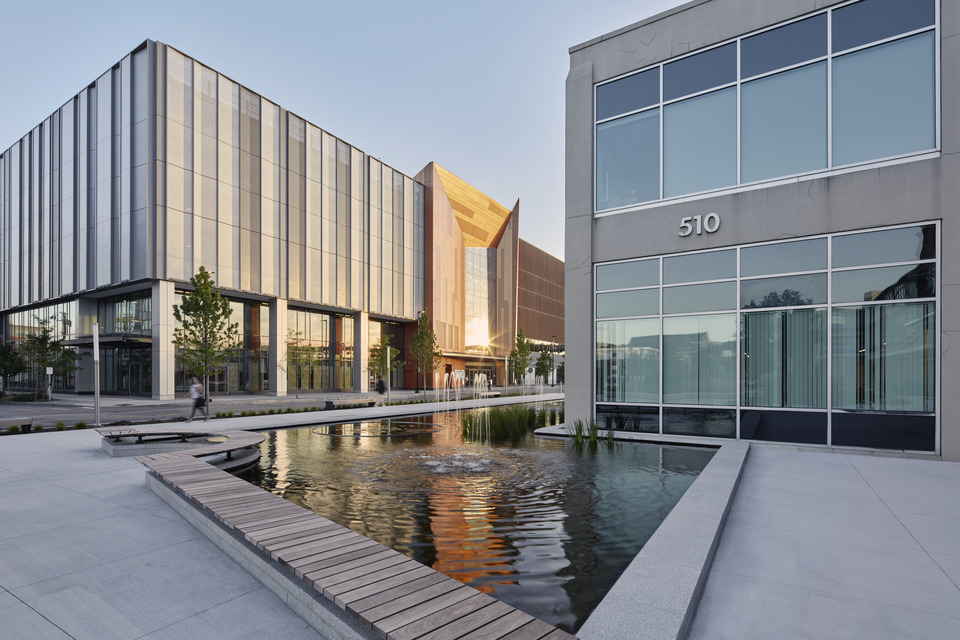
The Plaza’s main water feature, dubbed “The Pond”, pays tribute to the old mill pond and canal.
The design positions the water near adjacent buildings and the iconic Hood Milk smokestack. This echoes the historical setting of New England’s mills and factories, where structures stood alongside canals and waterways. Native plants poke from the water, just as local flora thrived at the mill pond.
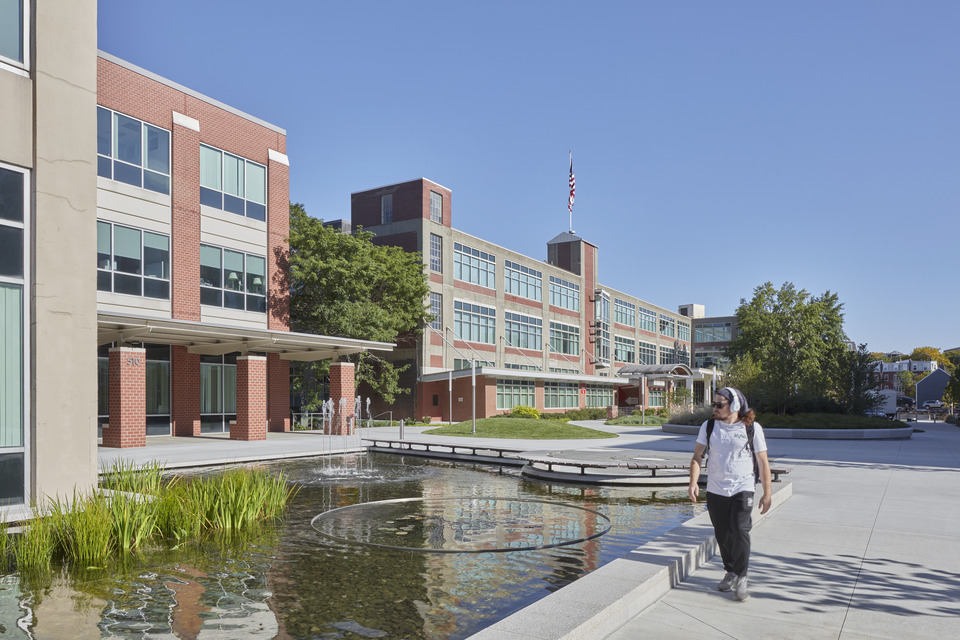
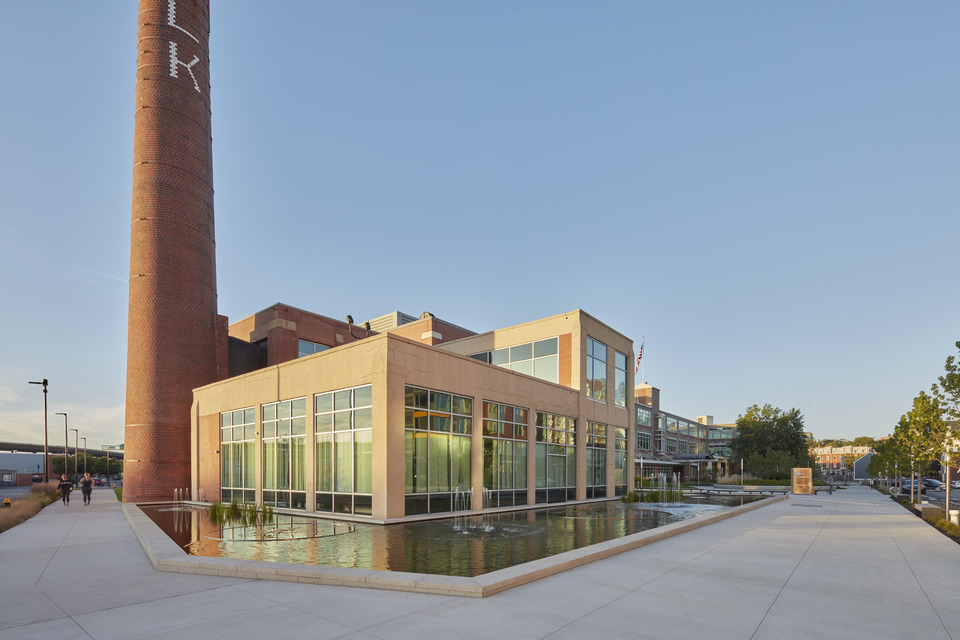
Hood Park’s raised grade addresses climate resiliency.
The site is located on former tidelands a quarter of a mile from waterways connected to Boston Harbor. As such, the area has increasingly been at risk from severe coastal flooding. To mitigate this, the design raises the grade of the Plaza and its surroundings by four feet. This futureproofing is made possible thanks to the site’s industrial past: the existing buildings were designed at an elevated grade to allow for the loading of dairy products. By raising the Plaza, the design not only addresses flooding concerns but greatly improves accessibility to the buildings by eliminating most exterior stairs.
